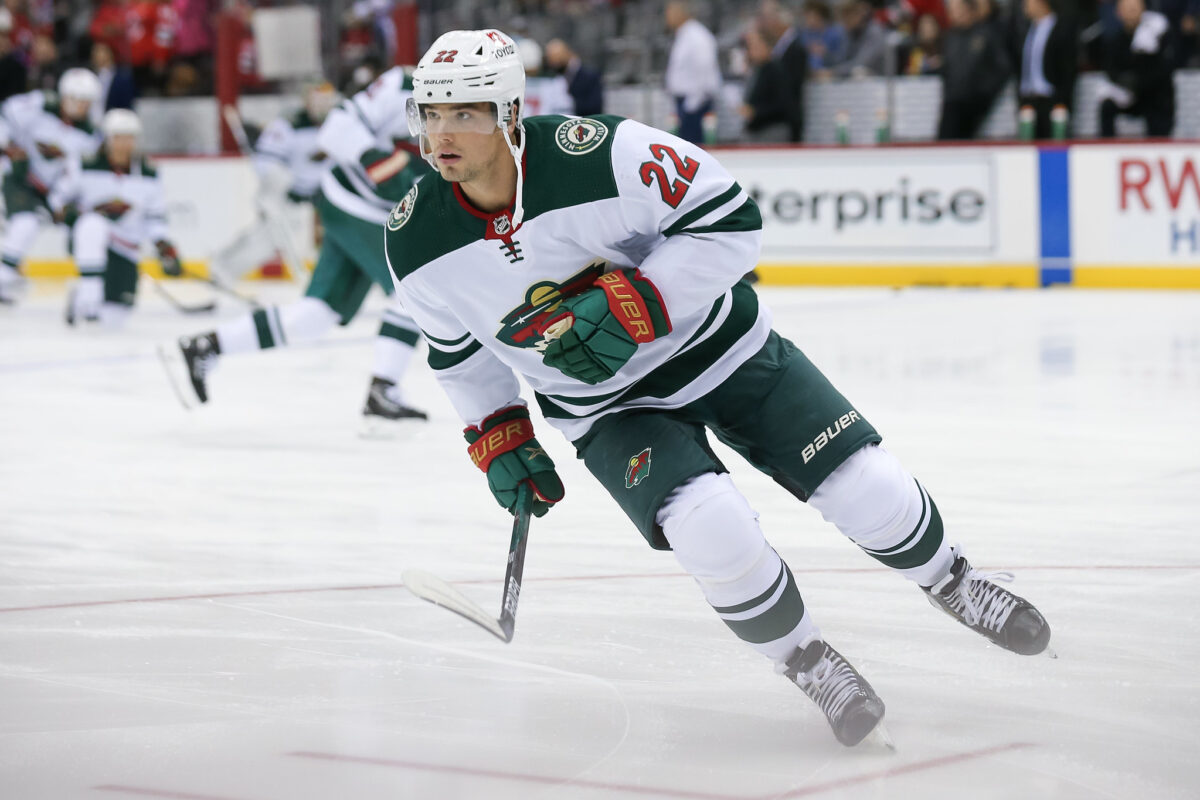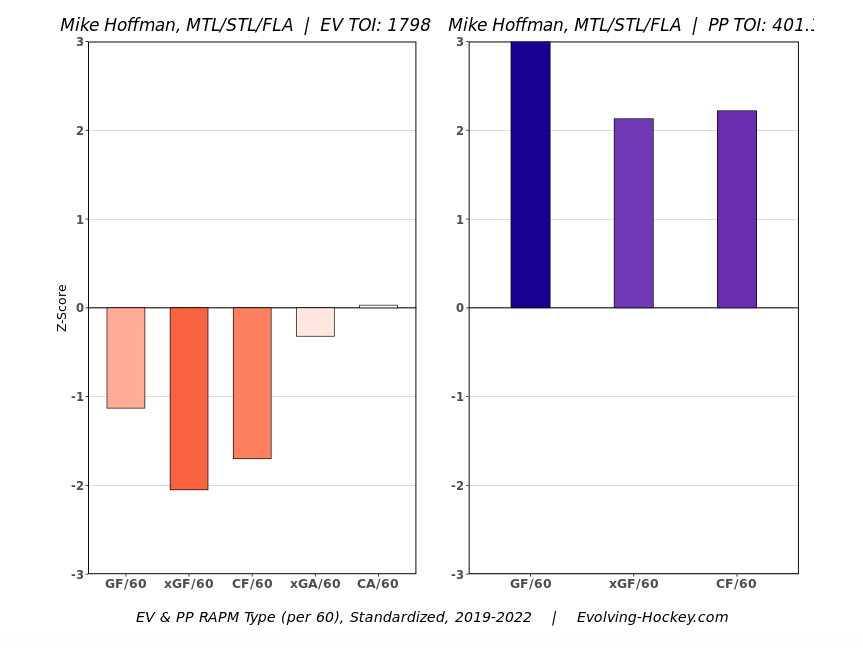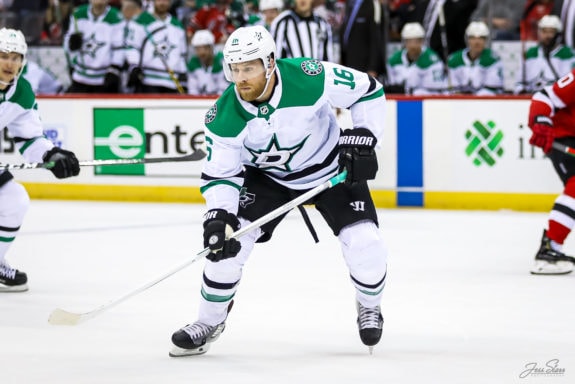After successfully navigating through the early absence of their franchise pillars in Sidney Crosby and Evgeni Malkin (remember him?), the Pittsburgh Penguins currently sit in fourth in the unforgiving Metropolitan Division. On the back of a 17-8-5 record at the turn of the year, head coach Mike Sullivan’s men are nestled comfortably in the higher of the Eastern Conference’s two wildcard spots. In spite of the numerous positives to draw from the first part of the 2021-22 season, all is not rosy in the Steel City.
The Penguins own the 28th-ranked power play, converting on a paltry 15.3% of their opportunities with the man-advantage. This is in direct contrast to their sparkling penalty kill efficiency (a league-leading 92.1%), which fortunately provides them with some welcome breathing room. Malkin’s imminent return should bolster an impotent special teams unit, but it’s unwise to bank on the production of a player who is emerging from an extended absence.
In any case, the Penguins can look forward to a number of reliable power play specialists to become available as the season wears on and the playoff picture begins to clear ahead of the trade deadline. Now, here are three of those trade options, each carrying their own set of baggage along with their obvious talent.
Kevin Fiala, Minnesota Wild
At first glance, Kevin Fiala‘s inclusion on this list of trade targets seems nonsensical. Why would the Minnesota Wild, currently tied for the Central Division lead by points percentage, be looking to move one of their more dynamic forwards? Sure, he’s veered off of the 65-point pace he produced at last season, but he’s still the same player who has scored at a 60-point rate over the course of his Wild tenure. So, what gives?
Crucially, Fiala is currently unsigned beyond this season, and the looming cap constraints brought about by the Zach Parise and Ryan Suter buyouts threaten to irreparably alter Minnesota’s competitive timeline. Adding further fuel to the fire is the reporting of Wild insider Michael Russo, suggesting that the Swiss winger isn’t long for Minnesota after butting heads with head coach Dean Evason. From Russo:
He’s a pending restricted free agent with the right to become an unrestricted free agent in 2023. If the Wild can’t afford him or just don’t want to afford him or commit to him, it’s very possible he’ll be traded, perhaps even soon because he’s not playing well and things are getting visibly uncomfortable between him and Evason.
source – ‘Jared Spurgeon injured in loss to Florida, and it’s worth paying attention to the brewing Kevin Fiala situation’ – Michael Russo – The Athletic – 11/20/2021
This summer’s contentious contract talks surely didn’t help either, as Fiala watched his teammates Kirill Kaprizov and Joel Eriksson-Ek receive hefty contract extensions tying them to the Wild for the foreseeable future. The 25-year-old forward had to settle for a one-year settlement after the club elected to undergo arbitration, a telling occurrence given it’s usually players who decide to go down that path.
This whirlwind of factors sets the stage for a heated standoff between player and management, and it appears that Fiala has little recourse in his current situation. Given that the Wild seem hell-bent on ridding themselves of him, why would the Penguins want him? Despite the tension between player and franchise, he is still a remarkable offensive talent yet to fully blossom into his prime.

He’s one of the NHL’s most fluid skaters in transition, and his offensive production puts him well within the range of a first-line scoring rate. He ranks just outside the top-40 in power-play points since 2019, and his even-strength scoring is good enough for 64th among all NHL forwards in that time. Fiala has also produced 5.8 power-play points per-60-minutes (39th among forwards), showing his versatility across multiple offensive situations.
That he’s currently snake-bitten could depress the Wild’s asking price, with Fiala scoring 4.9 goals fewer than expected in all situations according to MoneyPuck, the fifth-worst mark in the NHL this season. Such a cold-streak is unlikely to persist for much longer, and the Penguins could be the ultimate beneficiaries of an overdue positive regression.

The Penguins need to do some salary cap maneuvering to fit Fiala under the limit. He retains his arbitration eligibility upon his contract’s expiration, and is sure to argue for a substantial raise on the $5.1 million he’s owed this season.
Kasperi Kapanen ($3.2 million), Jason Zucker ($5.5 million), and Bryan Rust ($3.5 million) are the obvious outgoing candidates, and the fit becomes much easier if one or both of Malkin or Kris Letang takes a notable haircut on their next deals. Some may squabble with the idea that Fiala represents a marked improvement over Pittsburgh’s current crop of forwards, but I’d argue that he’s a significant upgrade for a team hoping to bridge the gap between two different competitive timelines.
Mike Hoffman, Montreal Canadiens
To say that things haven’t gone according to plan for Mike Hoffman and the Montreal Canadiens this season is an understatement. After an unexpected run to the Stanley Cup Final last year, high expectations were set even as key contributors in Phillip Danault, Shea Weber, and Carey Price either temporarily stepped away from the team, or left the organization entirely. Instead, the storied franchise has plummeted to unforeseen depths, grappling with the eternally cursed Arizona Coyotes for top-billing in the 2022 NHL Entry Draft.
Luckily for the Penguins, this means that any skaters who don’t figure in Montreal’s long-term plans can likely be had for cheap, and the offensively-inclined Hoffman promises to be the antidote for the club’s power-play struggles.
You May Also Like:
- Panthers Even Season Series With Penguins Following 3-2 Shootout Win
- Projected Lineups for the Penguins vs Panthers – 1/3/25
- 10 Greatest Pittsburgh Penguins in Franchise History
- Red Wings Defeat Penguins 4-2 on New Year’s Eve
- Penguins’ Rakell & Rust Motivated Since 4 Nations Face-Off Roster Snubs
Although his four goals in 19 games this season is disappointing, Hoffman’s shooting percentage (SH%) has dropped to 7.7%, well below his career mark of 11.9% conversion, and the worst since his first extended NHL audition in 2013-14. The slight dip is likely the result of simple bad luck, as his shot rate is slightly higher than last season, so he may just need a change of scenery to regain his composure in front of goal.
Even with his reduced production, Hoffman still figures prominently on the NHL’s power-play leaderboard, scoring the 18th-most goals with the man-advantage since 2019-20. However, his goal scoring isn’t his only contribution on the power play. Over the past two seasons, he ranks highly among all NHL skaters in goals per-60 (12th), assists per-60 (27th), and points per-60 (third), behind only Connor McDavid and Draisaitl in point-production.

There is the small hurdle of Hoffman’s contract commitment however, as the 32-year-old forward is owed $4.5 million until the end of the 2023-24 season, a bitter pill to swallow for an admittedly one-dimensional player. The Canadiens could be persuaded to retain half of his salary as they enter a new era driven by their fertile crop of prospects, and don’t figure to be competitive through the life of his contract.
It may require some massaging via a draft pick or prospect, but it can be done. The question is whether Hoffman’s offensive prowess can make up for his defensive shortcomings (running a 40% expected goals share at 5v5 this season, for example). I’m not sure it is, and the sizeable cap hit may prove unpalatable for Pittsburgh’s top brass.
Joe Pavelski, Dallas Stars
Joe Pavelski‘s availability is highly dependant on the Dallas Stars‘ place in the standings, as the Western Conference club remains in contention for one of two wildcard spots, even as they fall further off of the pace in the Central Division. If the team finds itself on the margins of the playoff race by the time the trade deadline rolls around, Pavelski becomes a prime trade candidate due to his status as a pending Unrestricted Free Agent (UFA). A grizzled post-season veteran of over 160 playoff games that is still producing at a relatively high level (27 points in 29 games this season) is sure to command most of the attention come deadline day.
Although the American icon is nearing the end of his career at age 36, he remains a lethal power-play marksman. He ranks eighth in total power-play goals since the 2019-20 season, and only Draisaitl (28) and Chris Kreider (22) have potted more goals across the past two campaigns. He may not possess the same explosiveness that he once did, but his acute offensive awareness softens the negative impact of his physical decline.
| Player | Games Played | Power-Play Goals |
|---|---|---|
| Leon Draisaitl | 86 | 28 |
| Chris Kreider | 81 | 22 |
| Joe Pavelski | 85 | 19 |
| Auston Matthews | 79 | 18 |
| Steven Stamkos | 68 | 16 |
Despite only ranking 81st among forwards in power-play shots per-60 since 2019, he picks his spots wisely, generating the 22nd-highest rate of individual scoring chances across the same time frame. As he demonstrates with goals such as these, all one needs is a keen nose for the net, banking on the vision of his team’s playmaking talent. His net-front role demands that he focus more on finishing chances rather than setting them up, but Pavelski hasn’t neglected his playmaking duties in compiling 2.27 assists per-60, a rate that is still good enough to rank within the top 150 of all forwards.
Pavelski’s $7.5 millon cap hit poses some issues, but salary retention or an exchange of unsavoury deals can overcome the financial constraints. He brings highly valued experience, and still fulfills his defensive responsibilities. Although a great deal of credit is owed to his two most frequent line-mates in Roope Hintz and Jason Robertson, the Stars control an overwhelming majority of scoring chances (56.4%) and cumulative chance quality (56.9 xGF%) with Pavelski on the ice at five-on-five. Come for the offensive production, stay for the defensive conscience.

Of the numerous players who are likely to become available come the trade deadline, Pavelski is one of a select few who can guarantee that they can withstand the grind of a lengthy NHL postseason while meaningfully contributing in the process. His acquisition cost could be astronomically high as a result, but it’s a price well worth paying.
Penguins’ Power-Play Problems a Cause for Concern in 2022
The all-conquering era defined by Crosby and Malkin is coming to a close, with the Russian pivot’s presence not guaranteed beyond this season at the time of this writing. Consequently, the Penguins should do right by the pair of franchise-altering superstars, and set them up for one final run at the Stanley Cup. An impenetrable penalty kill paired with a reinvigorated Tristan Jarry in goal represents the ideal backbone of a contender. All that they’re missing is another offensive weapon to take the workload off of the usual suspects. If there’s anything we know about team executives Brian Burke and Ron Hextall, it’s that they never go down without a fight, and they’re not about to start now.
Data courtesy of Hockey Reference, MoneyPuck, Natural Stat Trick, and the NHL.